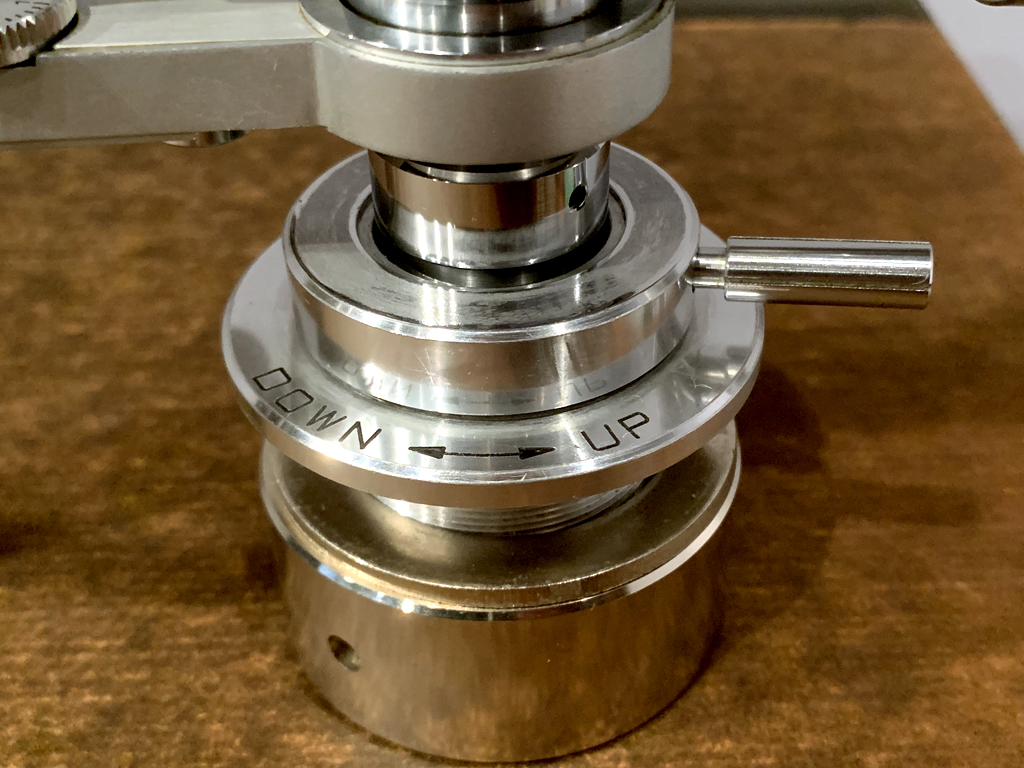I have an FR64S but I don’t think the fixing nut is hexagonal. I’ll check later today. Meantime you could measure the nut with a caliper and just buy a suitable “spanner”. Because of space limitations under an armboard, I think a socket wrench would work better.
So sorry. I just tried to gauge the size of the hexagonal nut that does fix my FR64S to the armboard, and I can barely see it without dismantling it, which I am loathe to do. The only thing I can say is that it IS hexagonal, as you say, But if you've got your armboard off the TT, then you will have no trouble determining the size of the nut. It's probably metric and seems to be at least 27mm. |
you might pass this on to whom you sell it to " thuchan1,009 posts Pani, from this discussion of the 66S here https://forum.audiogon.com/discussions/question-on-fr-66s I apologize ahead of time for the bald spot you might make scratching your head trying to ascertain what's 'best'.
|
this heavy ring has no flat spots, it has two holes, you temporarily put a rod in the hole and tighten it with the rod. Note, you want a washer below the board, above the heavy ring. Scroll up, the top ring with flat spots also has a hole so it can be tightened/loosened by that method also, in case a tool won't fit.
My prior undisputed favorite arm, very unique magnetically controlled Acos Lustre GST-801 (I got with help choosing and finding from members here). I like my restored JVC Victor UA-7082 equally, and it has the advantage of being 11-1/8" effective length, so it’s my new favorite. Both have removable headshells. |
Elliot, In your first photo, that huge nut with two flat sides is the unique nut for the B60 base. That's a costly option that facilitates VTA adjustment and also adds mass to the tonearm base. Without the B60 base, the nut is hexagonal and much less massive, and you adjust VTA with set screws as shown in your last photo. |
So maybe my memory is faulty in that the huge nut with parallel flat surfaces is common to setup both with and without the B60. But if that is the case, why would your manual refer to a "hexagonal" nut? With the B60 nut, no hexagonal wrench is appropriate. Just grab it with an adjustable wrench, the kind with two flat surfaces that move together or apart with the spiral shaped adjuster, and Bob’s your uncle. More likely, you have the B60 VTA adjuster there, which would account for the discrepancy between the language of the manual and the nut you are looking at. The B60 adds at least $500 of value to the ensemble, IMO. Maybe more. |
If you’re looking at the large round nut with flattened parallel facets, as shown in Elliot’s photo, I’d first try to turn it counterclockwise by hand, grabbing those facets. If that doesn’t work, then I’d use an adjustable wrench as I described above. Adjust it so it is in contact with those facets, hold it close to the head so you’re not exerting max leverage, and gently turn counterclockwise. |
This is an adjustable wrench. It has two flat parallel jaws that could engage that large nut with flat parallel sides. For good measure, protect the nut with tape before engaging it with such a wrench. "small metal rods". Are you referring to the small size Allen or hexhead wrenches that one could use to loosen the set screws in a B60? I guess that could work too, to remove the tonearm from the armboard without removing the B60 itself. To post a photo, you need first to post them on an external website set up for this purpose. Elliot can help you with that; I have never done it. Channel lock pliers are very likely to "booger" the nut. And there is only one direction to loosen a screw or a nut, to the left or counterclockwise when you are looking at the nut. "Righty tighty; lefty loosy" is how I remember it. There is the occasional screw that is reverse threaded for a reason related to its use, but I don’t think that applies here. |




